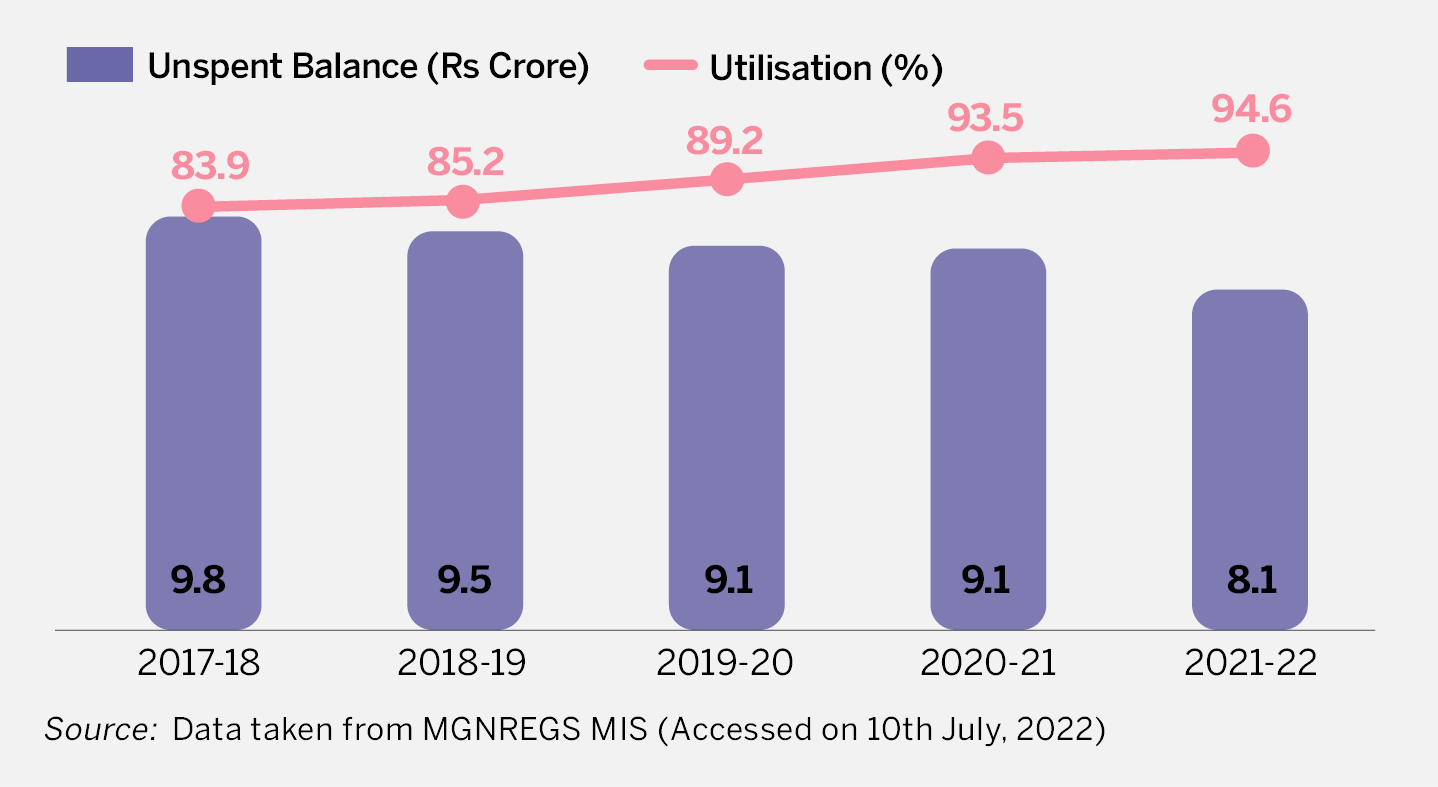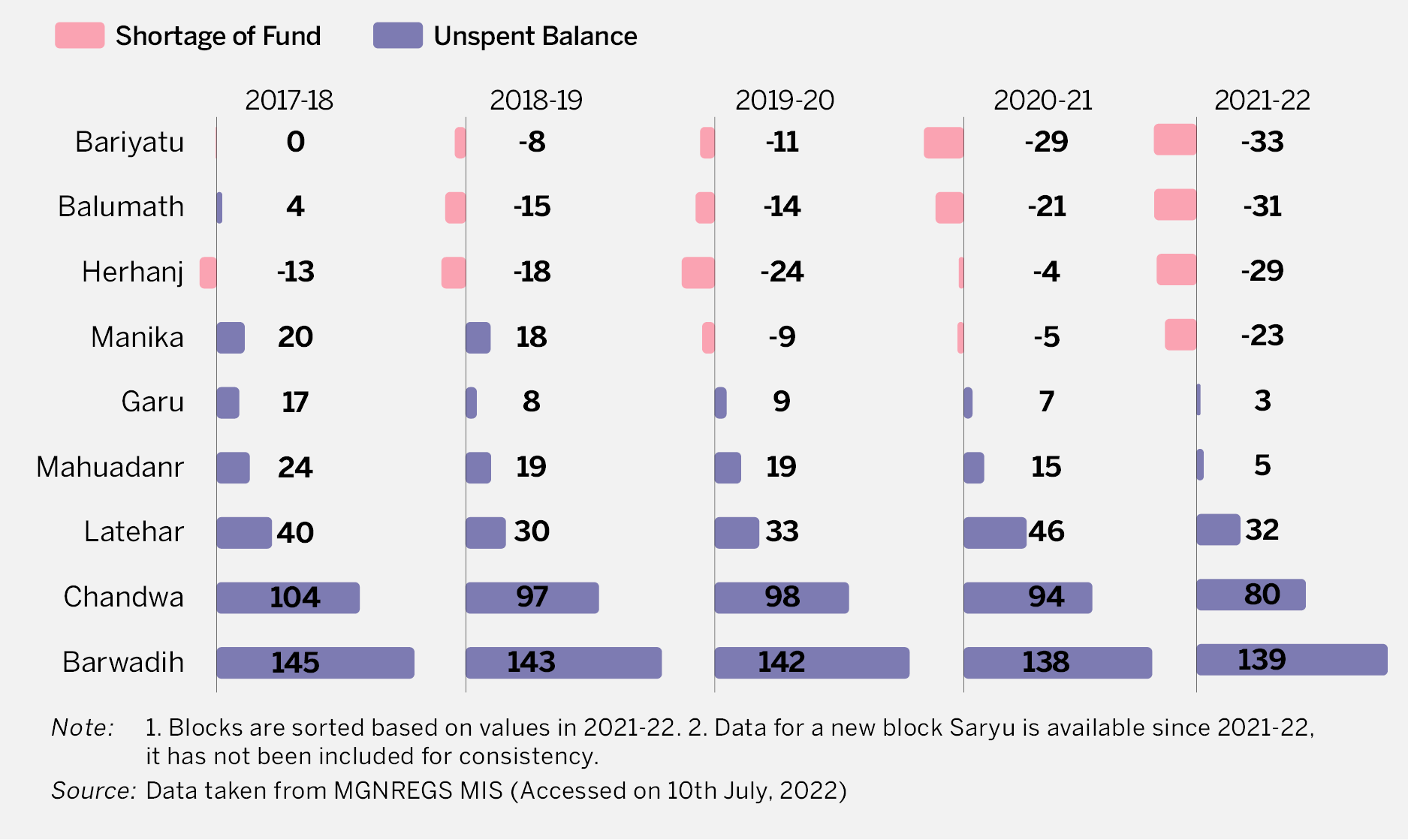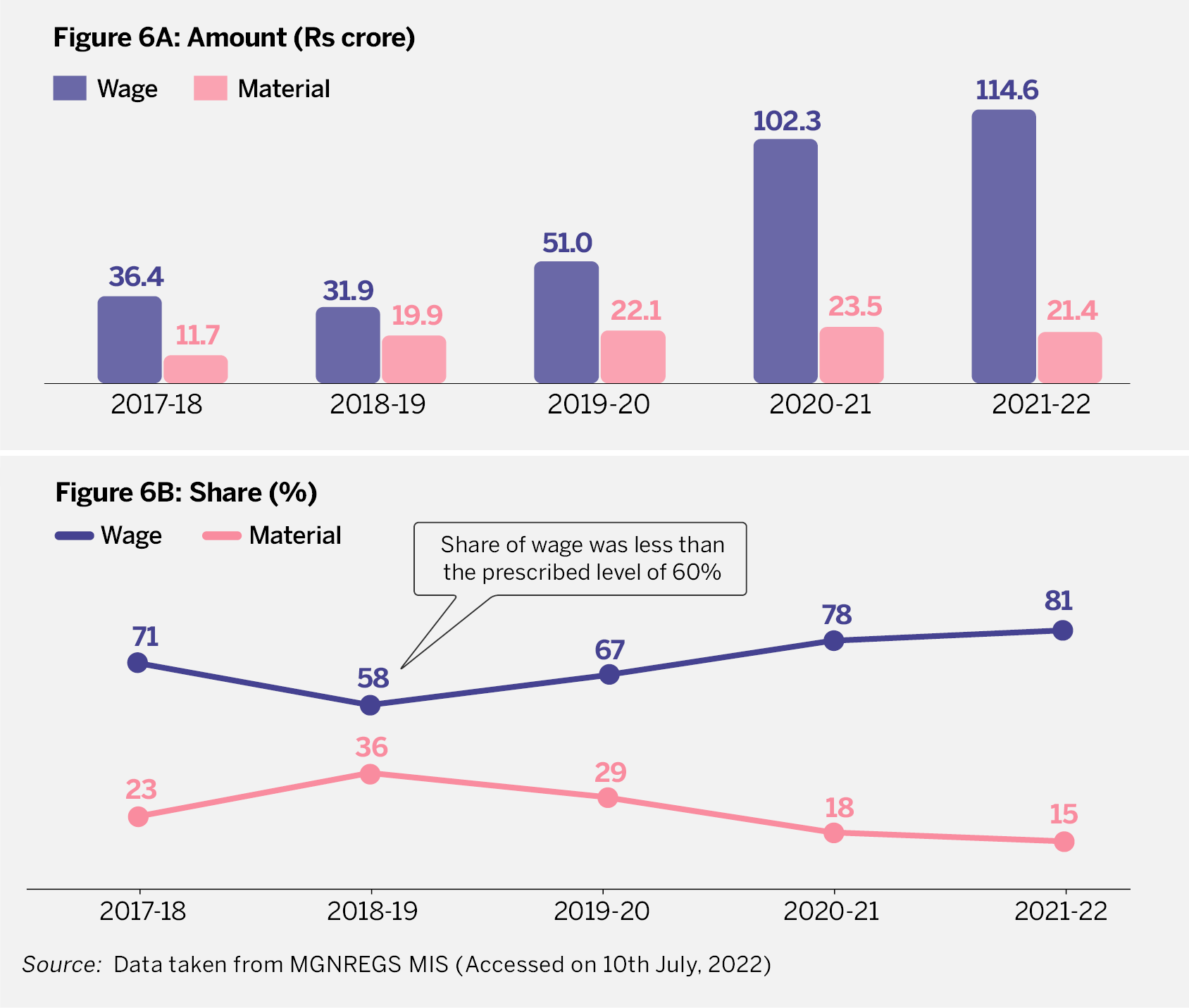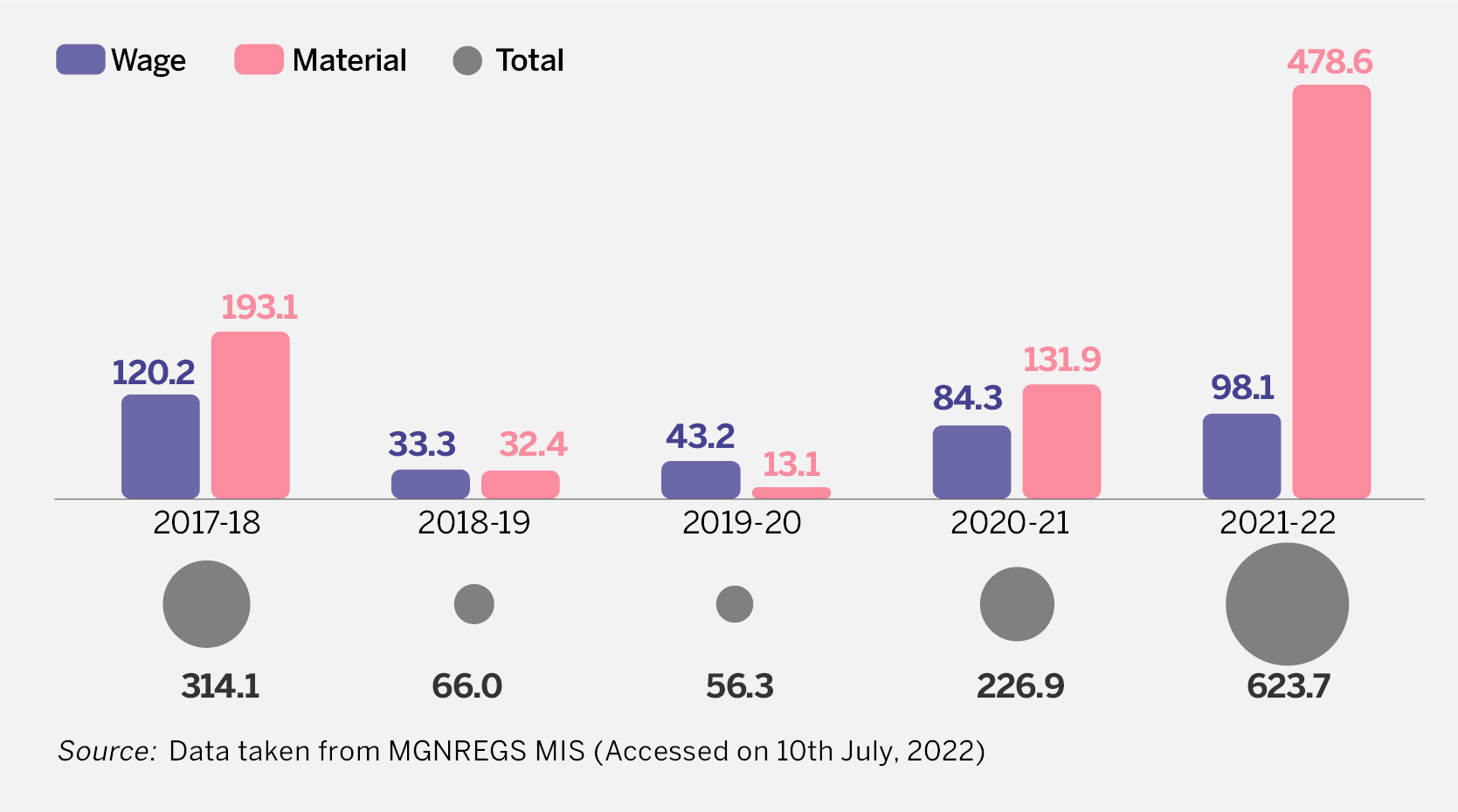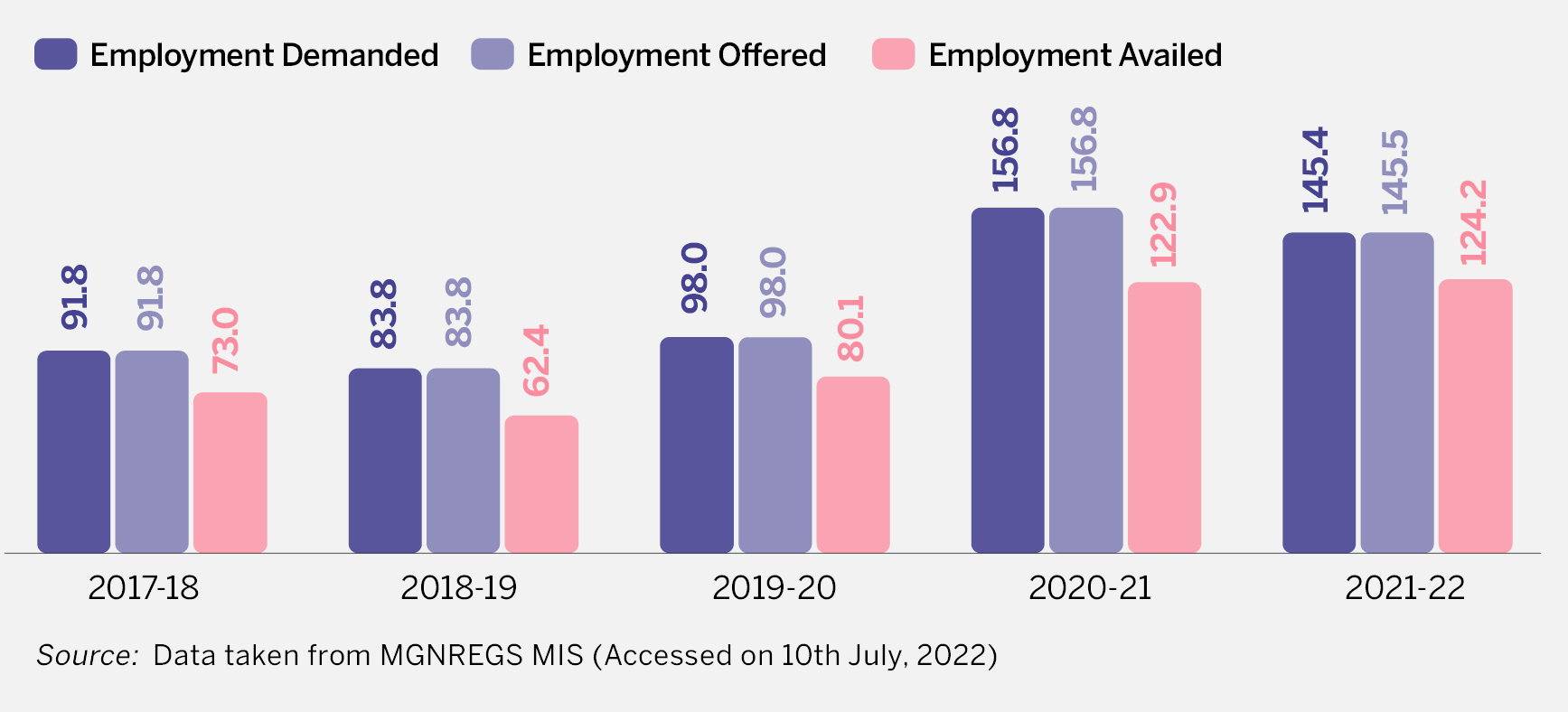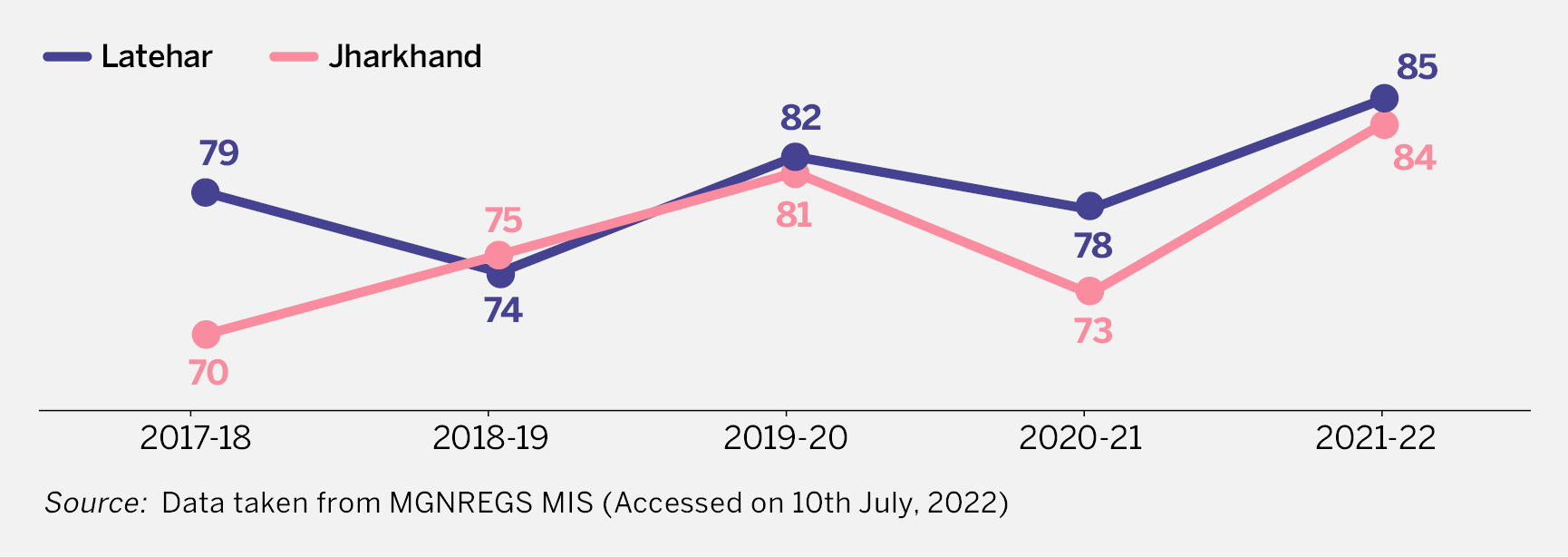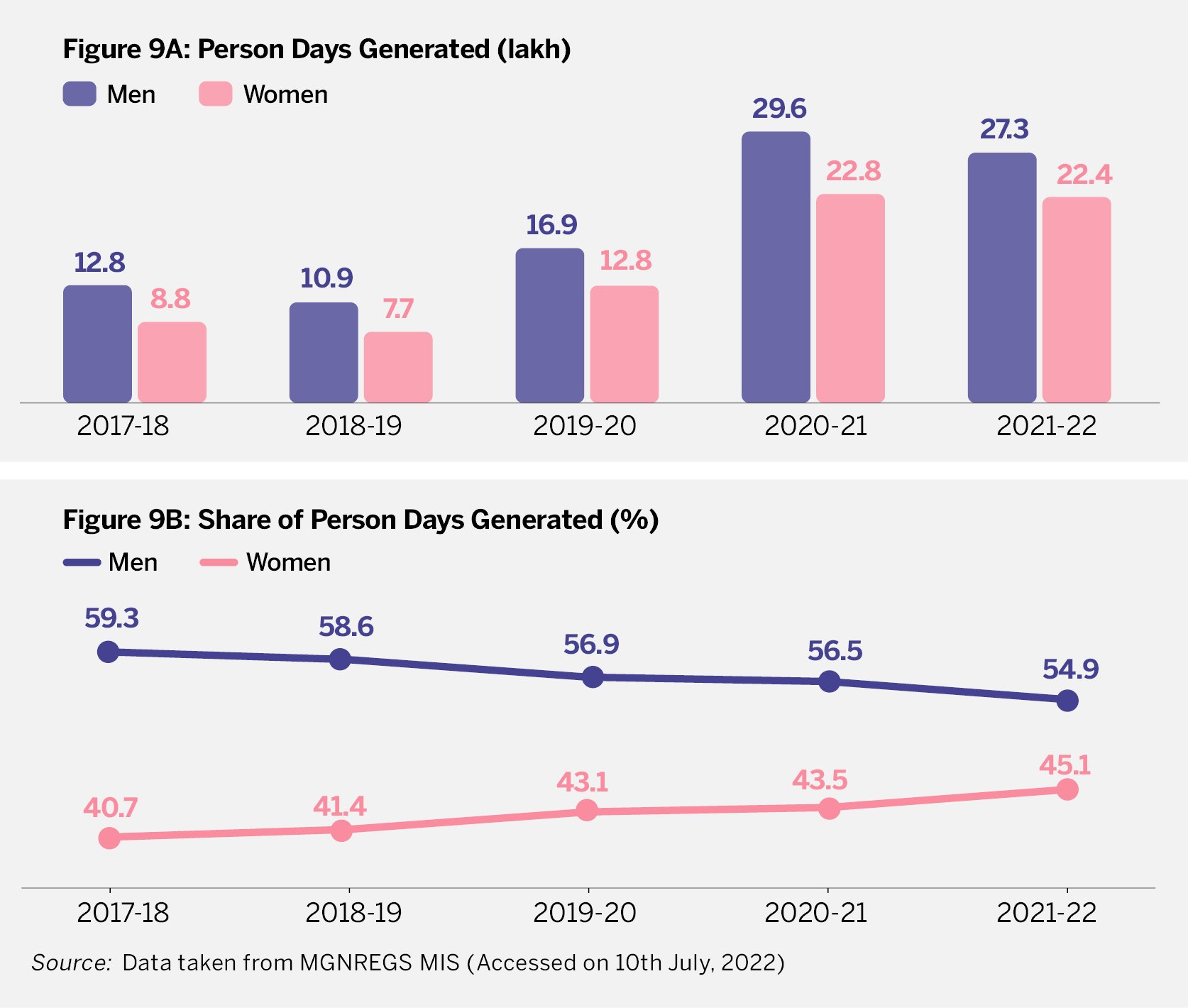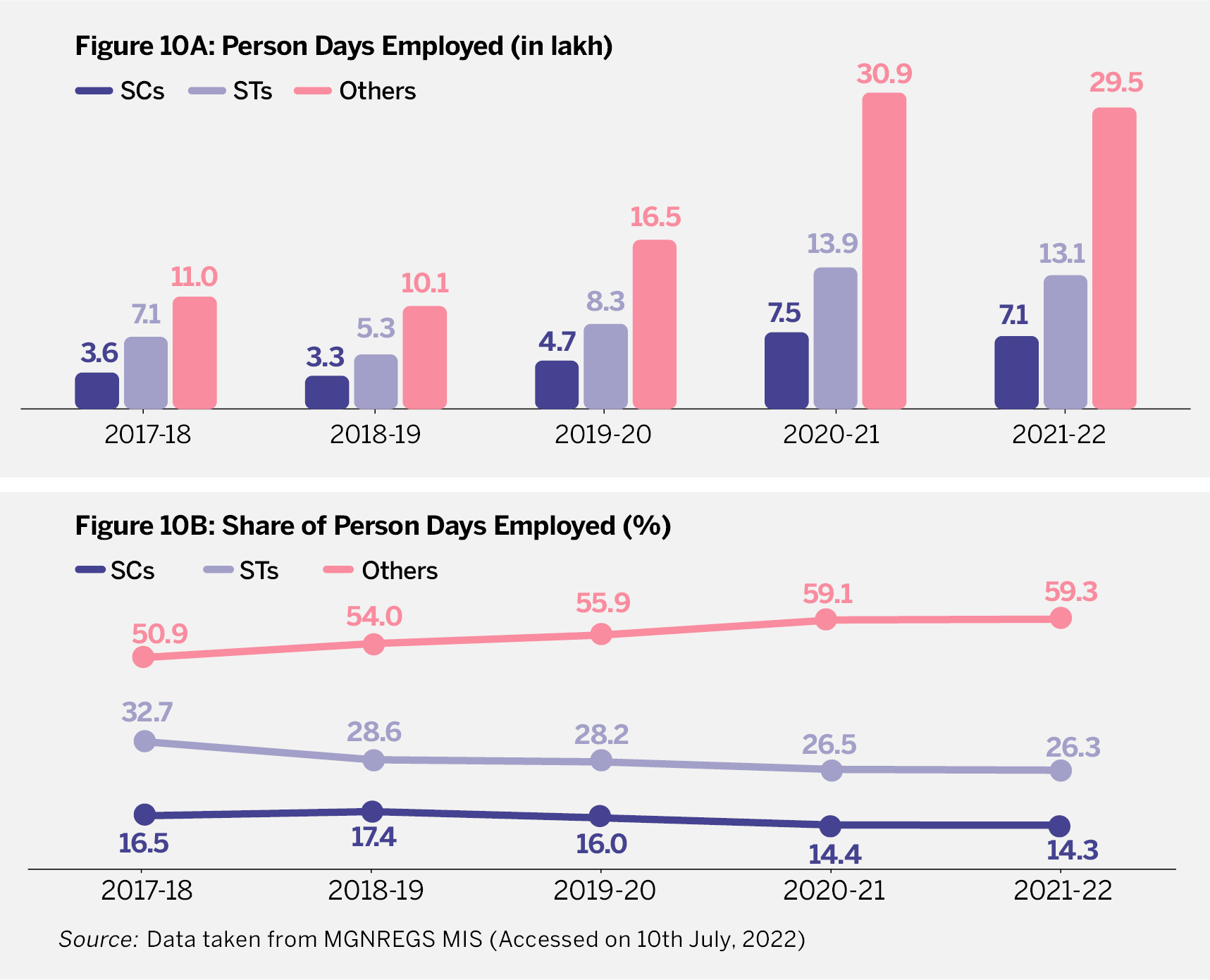01.
How Much Fund Was Made Available and How Much Was Spent?
Section titled How Much Fund Was Made Available and How Much Was Spent?Fund is made available for the districts based on the demand of employment and the need for material.
Figure 1: Fund Available and Expenditure (Rs Crore)
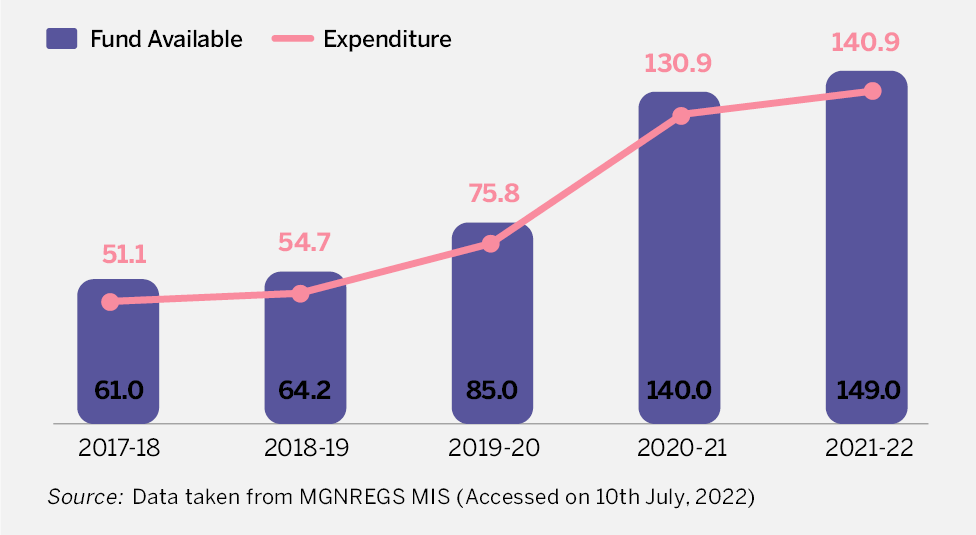
- Between FY 2017-18 and FY 2021-22, total fund available, which is mainly the fund released each year by the government but also includes the surplus/ unspent balance from last year, has seen an increase of Rs 88.0 crore. In the same period, total expenditure has also seen an increase of Rs 89.7 crore.
- The largest of this increase came in 2020-21 when fund availability and expenditure increased by 65% and 73% year-on-year compare to average of 18% in last two years.
- The increase in 2020-21 is on account of the multi-faceted economic crisis induced by COVID-19 pandemic which increased the demand for employment under MGNREGS.
Figure 2: Cumulative Fund Available and Expenditure Between FY 2017-18 and FY 2021-22 (Rs Crore)

- Figure 2 shows the total fund available and total expenditure at the block level for the period of 2017-18 and 2021-22.
- In this period, the largest fund available as well as the largest expenditure has been for Manika, while the lowest is for Mahuadanr.
- Out of nine blocks, three blocks, namely – Balumath, Bariyatu and Herhanj has higher expenditure than fund available.
